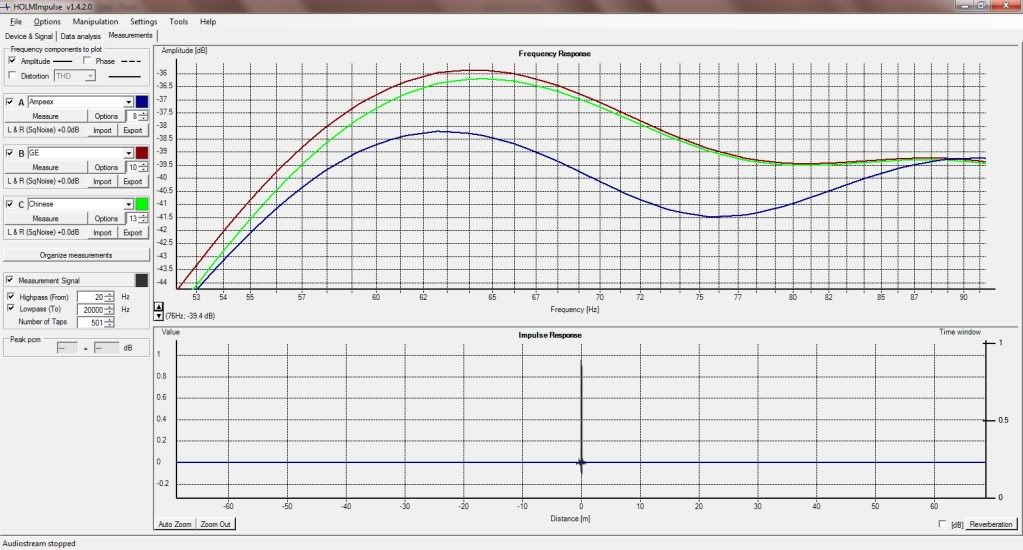Hi Bernard!
See the area within the elipse I've drawn on your plot?

That reflection has been sharply reduced by your traps. Timing looks perfect for a reflection from the front wall, too. Ideally, you want a smooth, dense set of reflections which diminish in volume over the first 40mS, or so. Reducing that early spike is a step in a good direction, acoustically speaking. To find the problematic spikes, one must use an unsmoothed response.
Best primer for audiophiles on this is Mellor/Hedbeck's paper I've linked to, before: http://blog.acousticfrontiers.com/w...-standards-for-stereo-listening-rooms-pu.html, as well as a follow-up by Nyal here.
Ideally, we'd also look at a smoothed response by octave, as well as left-only/right-only comparison. Unfortunately, Omnimic doesn't smooth, yet. I'm trying to get Bill Waslo to take this on, as it's really a very simple transform for the software. Until then, only programs like REW, ARTA, etc. will do.
See the area within the elipse I've drawn on your plot?

That reflection has been sharply reduced by your traps. Timing looks perfect for a reflection from the front wall, too. Ideally, you want a smooth, dense set of reflections which diminish in volume over the first 40mS, or so. Reducing that early spike is a step in a good direction, acoustically speaking. To find the problematic spikes, one must use an unsmoothed response.
Best primer for audiophiles on this is Mellor/Hedbeck's paper I've linked to, before: http://blog.acousticfrontiers.com/w...-standards-for-stereo-listening-rooms-pu.html, as well as a follow-up by Nyal here.
Ideally, we'd also look at a smoothed response by octave, as well as left-only/right-only comparison. Unfortunately, Omnimic doesn't smooth, yet. I'm trying to get Bill Waslo to take this on, as it's really a very simple transform for the software. Until then, only programs like REW, ARTA, etc. will do.
Last edited:





